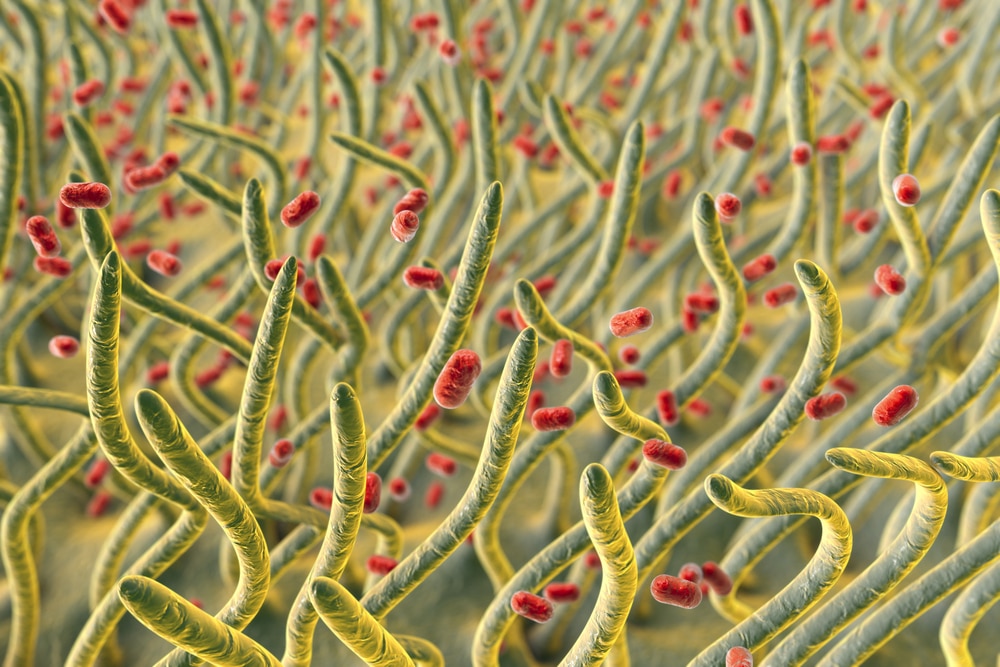Newsletter Signup - Under Article / In Page
"*" indicates required fields
Is edoxudine, an anti-herpes molecule discovered in the 60s, effective against Klebsiella pneumoniae, a common bacterium in hospitals?
The excessive use of antibiotics has pushed bacteria to develop resistance mechanisms to treatment.
Antibiotic resistance is now considered by the WHO as one of the greatest threats to health. The lack of treatment against multi-resistant bacteria could mean a return to a time when millions of people died of pneumonia or salmonella. K. pneumoniae, which is very common in hospitals and particularly virulent, is one of the pathogens against which treatments are becoming ineffective.
However, a team from the University of Geneva (UNIGE) has discovered that edoxudine, an anti-herpes molecule discovered in the 60s, weakens the protective surface of Klebsiella bacteria and makes them easier to eliminate for immune cells. The findings were published in the journal PLOS One.
K. pneumoniae causes many respiratory, intestinal and urinary tract infections. Due to its resistance to most common antibiotics and its high virulence, some of its strains can be fatal for 40% to 50% of infected people.
There is an urgent need to develop new therapeutic molecules to counter it.
Other approaches possible
“Since the 1930s, medicine has relied on antibiotics to get rid of pathogenic bacteria,” said Pierre Cosson, professor in the Department of Cell Physiology and Metabolism at the UNIGE Faculty of Medicine, who led the research.
“But other approaches are possible, among which trying to weaken the bacteria’s defense system so that they can no longer escape the immune system. This avenue seems all the more promising as the virulence of Klebsiella pneumoniae stems largely from its ability to evade attacks from immune cells.”
Amoeba as a model
To determine whether or not the bacteria were weakened, the UNIGE scientists used an experimental model: the amoeba Dictyostelium. This single-cell organism feeds on bacteria by capturing and ingesting them, using the same mechanisms that immune cells use to kill pathogens.
“We genetically modified this amoeba so that it could tell us whether the bacteria it encountered were virulent or not. This very simple system then enabled us to test thousands of molecules and identify those that reduced bacterial virulence,” Cosson said.
Weakening bacteria without killing them
Developing a drug is a long and expensive process, with no guarantee of results. The UNIGE scientists therefore opted for a quicker and safer strategy: reviewing existing drugs to identify possible new therapeutic indications. The research team evaluated the effect on K. pneumoniae of hundreds of drugs already on the market, with a wide range of therapeutic indications.
A drug developed to combat herpes, edoxudine, proved particularly promising.
“By altering the surface layer that protects the bacteria from their external environment, this pharmacological product makes it vulnerable. Unlike an antibiotic, edoxudine does not kill the bacteria, which limits the risk of developing resistance, a major advantage of such an anti-virulence strategy,” Cosson noted.
Although the effectiveness of such a treatment in human beings has yet to be confirmed, the results of this study are encouraging: edoxudine acts even on the most virulent strains of K. pneumoniae, and at lower concentrations than those prescribed to treat herpes.
“Sufficiently weakening the bacteria without killing them is a subtle strategy, but one that could prove to be a winner in the short and long terms,” Cosson concluded.






